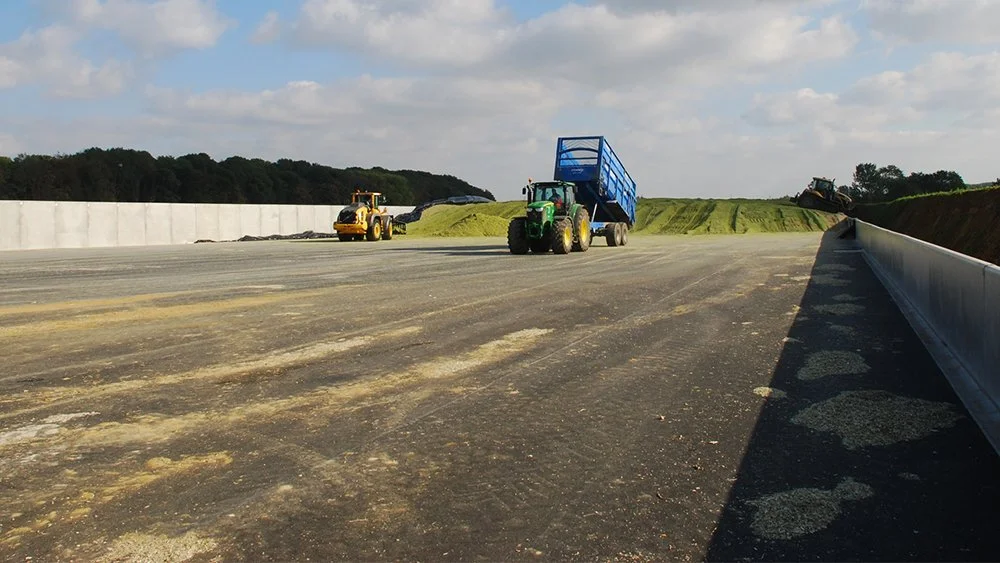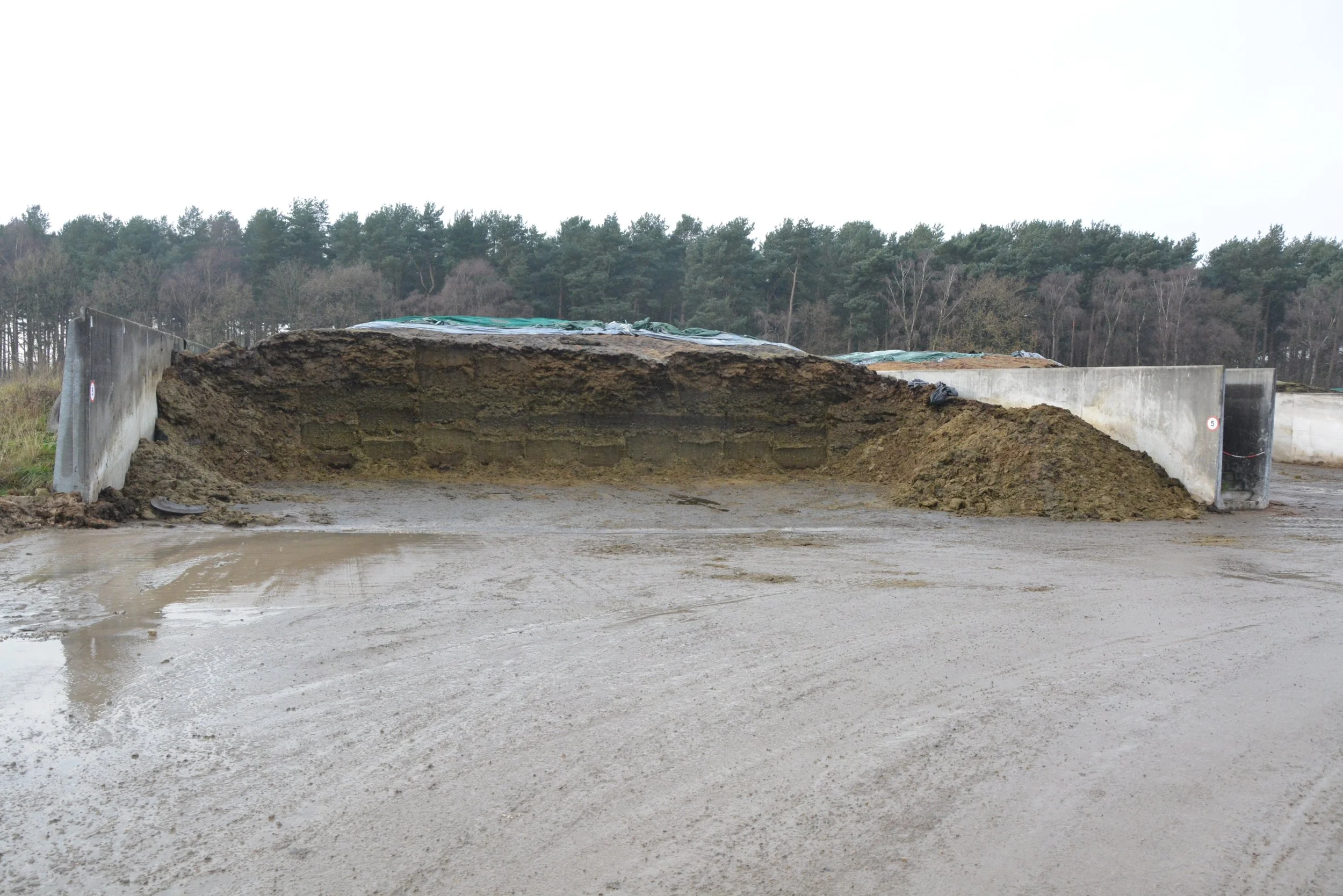What is the ideal width for a silage clamp?
Everyone has a mental image of the ideal silage clamp layout, but everyone’s view is influenced by their own point of view. If you’re the person filling a clamp you might have a very different view than the guys that empty it and different again from the poor soul who had to pay for it in the first place. So what is my ideal silage clamp? This is a common question whenever we start the process of designing a new clamp or set of clamps. And the answer is - there isn’t one - as every farm needs a different solution from my point of view.
So why is the width of a clamp so important?
The chosen width of the clamp is super critical in the design process. For any given storage size, the width of the clamp is the real dictator in the design layout. The most economical clamp space will be square as this offers the most space per pound (or whatever currency is local). But most clamps aren’t square because we need to limit the feed face width to minimise losses – and losses cost you money EVERY year not just the year you build the clamp. Obviously a clamp that’s too narrow is a nightmare to work in and nobody wants a really narrow clamp, but sometimes it is the best solution.
So how do you choose the correct clamp width?
From years of standing on sites I know so many farmers who already have an idea of the clamp width in their minds, just because “it’s a good size” or “I’ve seen one like that”. Now that might be OK but really you need to be using maths to get you the answers. Wastage is always the enemy, and the aerobic wastage at the clamp face is the thing you can control with the width of the clamp. And control it you should, because it’s usually by far the biggest area of losses for your silage.
Wide silage clamp by J P Concrete Ltd
One of the most important tools in your fight against silage losses is the width of the silage clamp face. If you can work through the silage at a good rate, you can keep the face fresh and the losses under control. So one of the first things you need to decide is how fast you need to progress the feed face.
In traditional thinking, the accepted rate was about one foot per day so in new money about 300mm per day or 2m per week. That will give you a good chance of keeping losses under control. But that was then and this is now, and now we don’t use a silage clamp in the same way we did back in the 70’s.
Today more and more clamps are in the “feed-out” phase for way more than 6 months of the year. Obviously AD plants and 365 housed dairy herds feed out all year round. In addition, the weather has changed and today’s winters are not what they were. The losses due to aerobic exposure are caused by microbes munching through your silage, and their activity is governed by availability of oxygen & the ambient temperature. Warmer temperatures mean faster degradation of the silage so for clamps that are fed out all year, we need some more ambitious figures.
What are the ideal silage feed-out rates?
Using the information above, I would suggest that the 2m per week (or 300mm per day) is the minimum progression for clamps used between October and March in the UK. Outside of that period I would recommend rates of 3m per week or 450mm per day. In practice for large tonnage clamps this is not really a problem but sometimes the holder of the purse strings can take some convincing to make the clamp narrower. So let’s try and put some numbers to the costs.
Using a theoretical 3000 tonne clamp, with 3m high walls, the “cheapest” square layout would be 37m wide x 37m long.
A better design would be an oblong clamp 57m long and 24m wide. If you are planning to feed out over 180 days (or six months) this would give a feed face progression of 315mm per day or 2.2m per day. This is pretty much ideal for the UK winter.
Taking some simple budget costings the oblong design will be around £10,000 more to build than the square one. This might be hard to find at the time of building but this is a one off cost. I would argue that it’s sensible to finance this over the longer term because of the potential losses saved.
In terms of losses the square clamp would be at least double the oblong layout. Minimal losses for the optimal clamp would be around 10% of the stored tonnage. The square clamp would be more like 20% - although I would argue it’s far more likely to be 30% plus….
The cost of the losses
The cost of making silage – or the value of the silage – currently is in the £25-£35 per tonne zone. Taking the lowest cost and lowest loss predictions, the square clamp will cost you an additional £7,500 per year. At £35 per tonne and 20% losses, this jumps to £10,500. Take the losses at (a more realistic) 30% figure and the total cost is £21,000 per year. And then factor in design life of the clamp at least 20 years, and you start to see these figures ranging from £150,000 to £420,000.
You quickly begin to realise that you can’t afford to build a cheap clamp. What’s also really clear is that you can’t afford to get the clamp basic shape wrong. Take the time to get the clamp width optimised before any sizing is set in stone.
If you need any further information or help designing the width of your next silage clamp, or for any of the other aspects covered in this series – contact Jeremy Nash at jeremy@silageconsultant.co.uk
If you have enjoyed reading this blog you could…..

